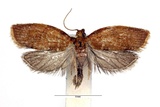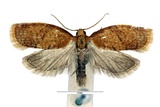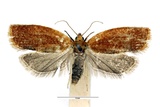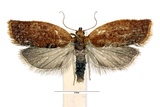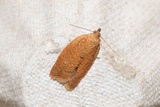Clepsis consimilana (Hübner, [1817]) Species
Last modified: Oct. 14, 2025, 3:09 p.m.
A common species throughout Belgium.
Details
- Classification
- Family: Tortricidae > Subfamily: Tortricinae > Tribus: Archipini > Genus: Clepsis > Species: Clepsis consimilana
- Vernacular names
- Tuinbladroller (NL), Privet Tortrix (EN), Ligusterwickler (DE)
- Synonyms
- Clepsis unifasciana (Duponchel, 1843)
- First mention in Belgium
- De Fré Ch. 1858. Catalogue des Microlépidoptères de la Belgique. — Annales de la Société entomologique belge 2: 45–162. On page 70.
- Status
-
Native
Distribution
Bionomics
The larva feeds from a dense, untidy spinning, preferring dead or withered leaves. It hibernates in the third instar. Pupation takes place in the larval feeding place.
The moths are active in afternoon and evening and later come to light.
No pictures yet!
Flight periods
The adults have been observed from the end of May till the end of August. A partial second generation occurs in September and some individuals can be seen till late October.
Observed on
- Host plant (genera):
- Ligustrum
The larva feeds of mainly Ligustrum, but also on a great variety of plants like Syringa, Hedera, Lonicera, Polygonum, Malus, Carpinus, Crataegus, Cotoneaster, and probably many others.
No pictures yet!
Habitat
Widely distributed.
No pictures yet!
